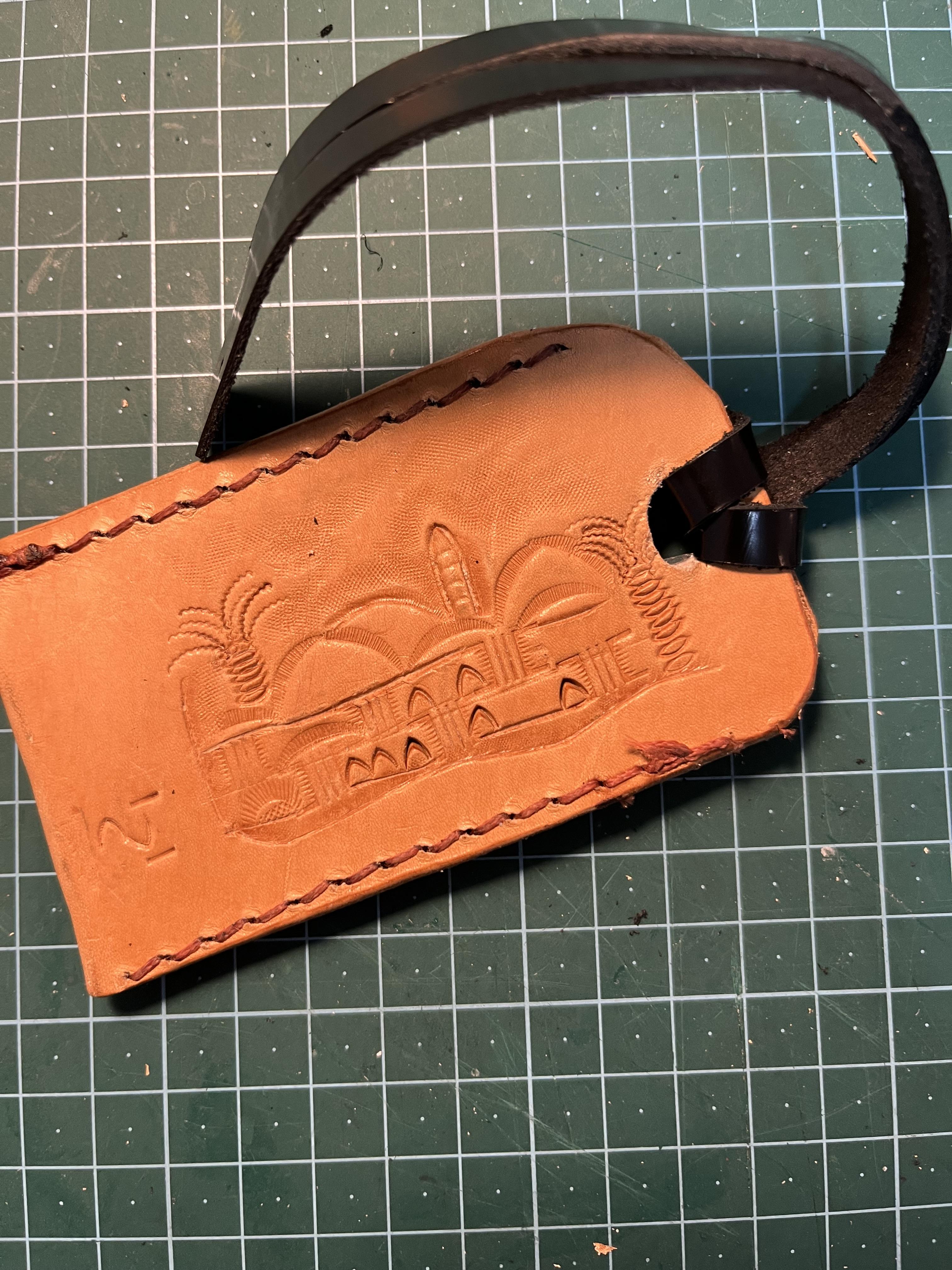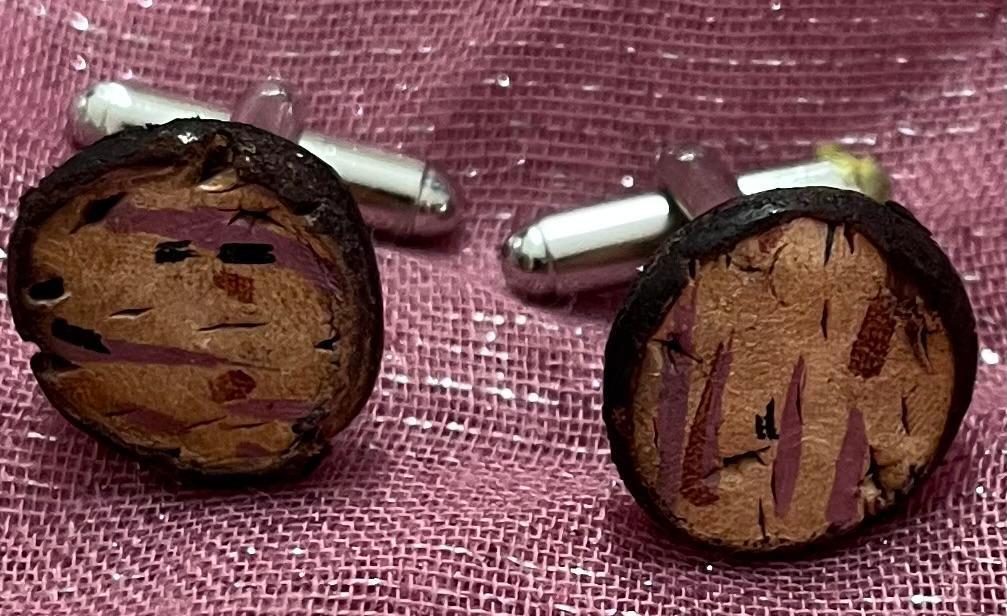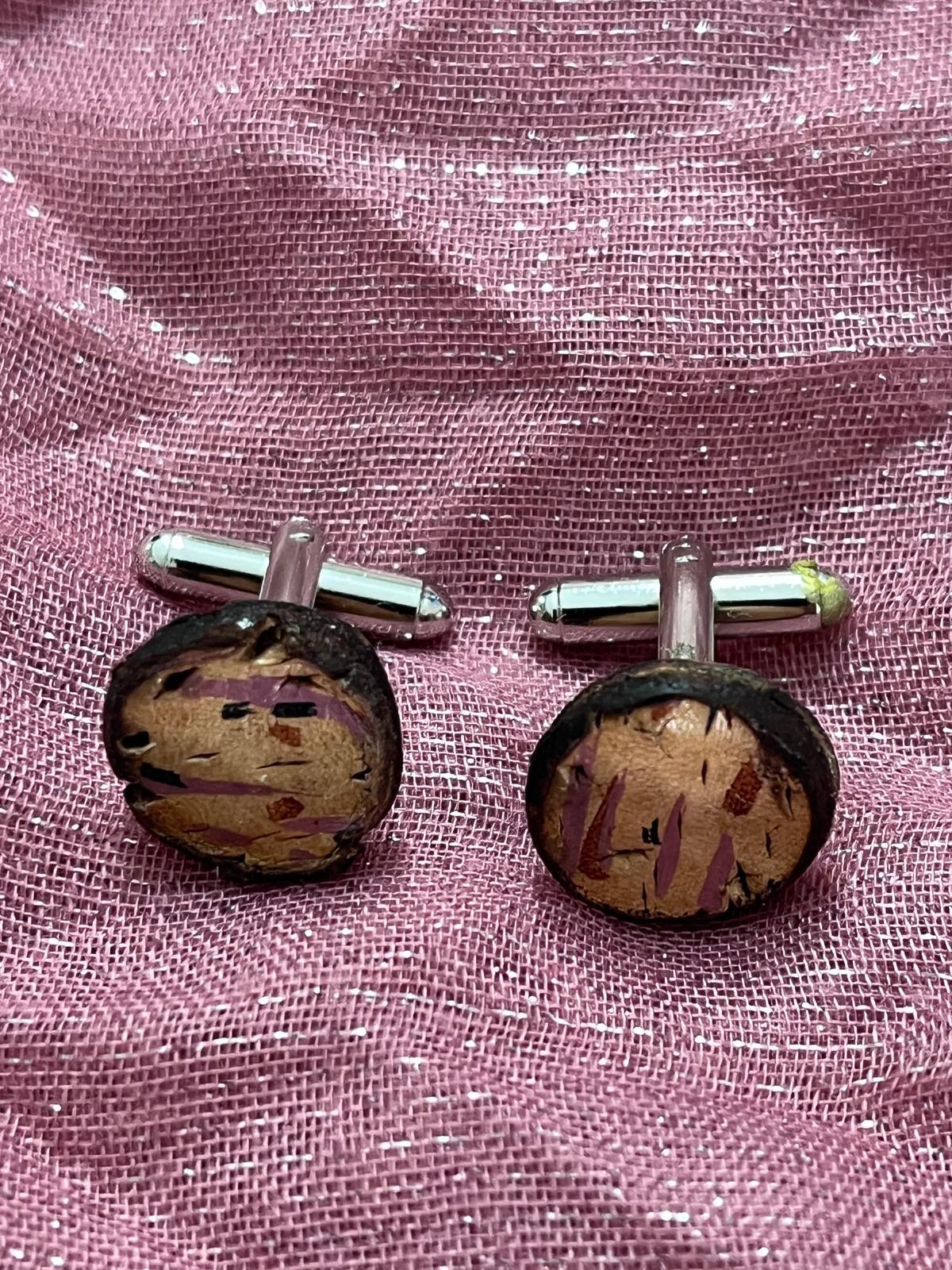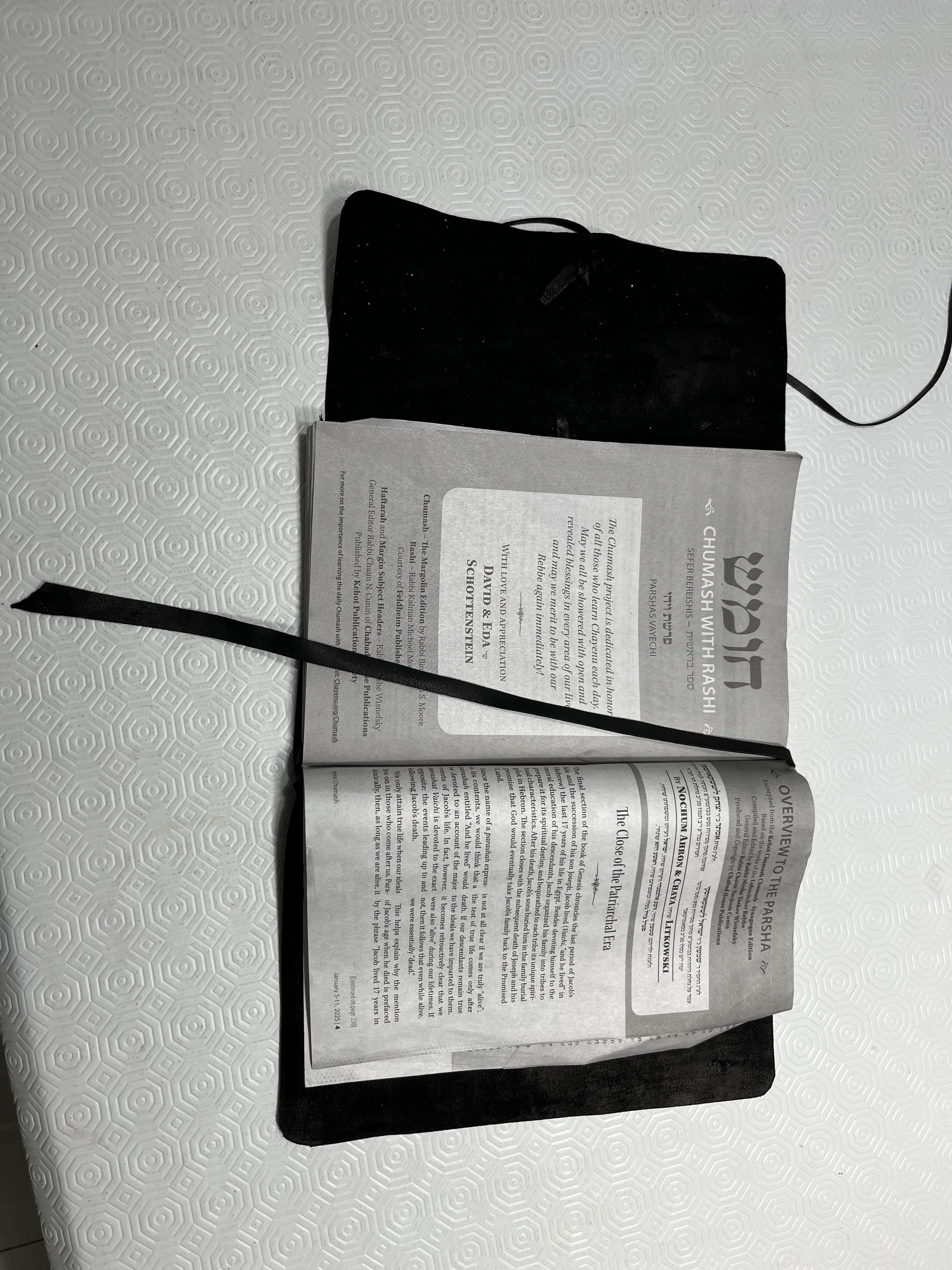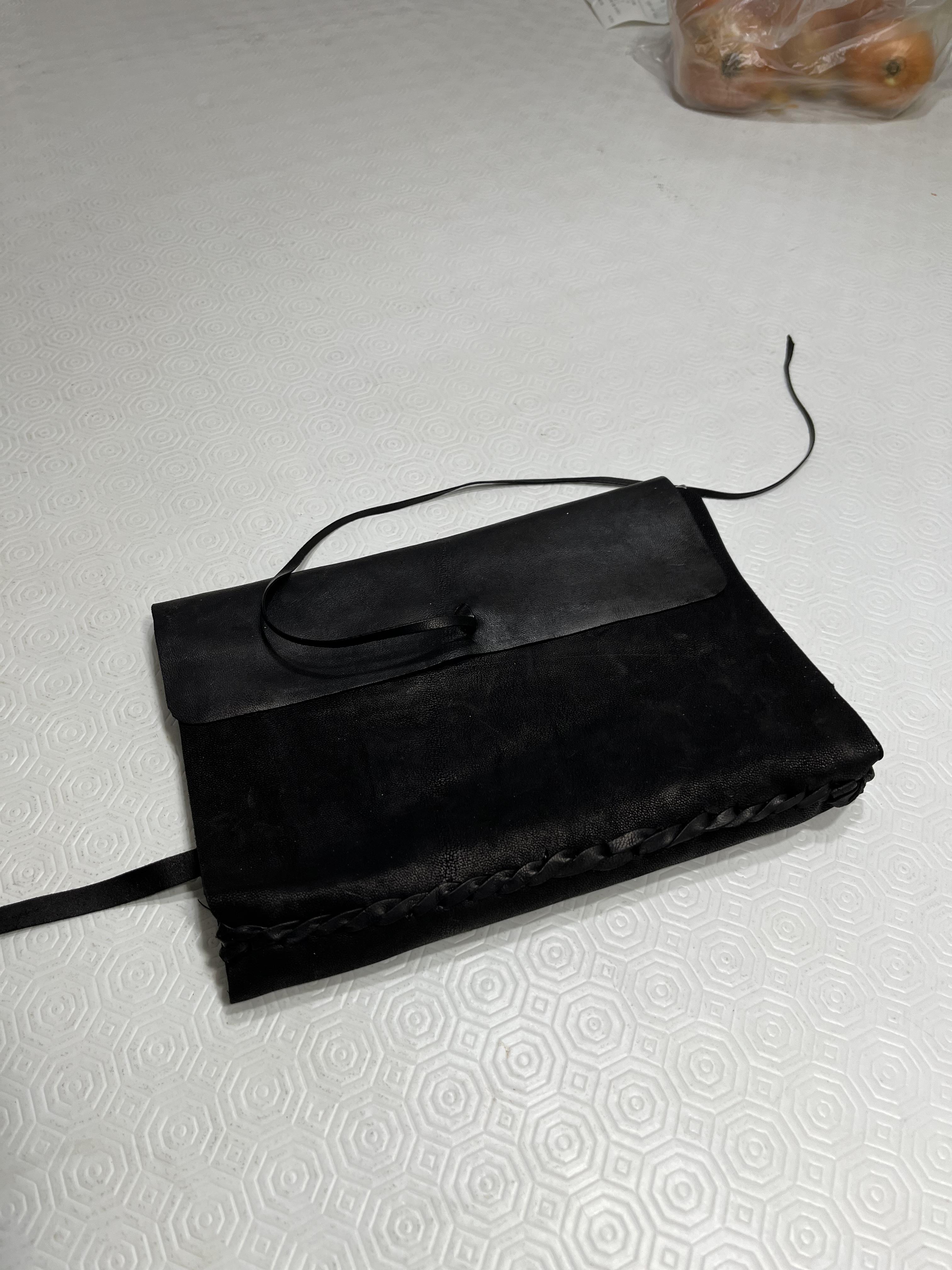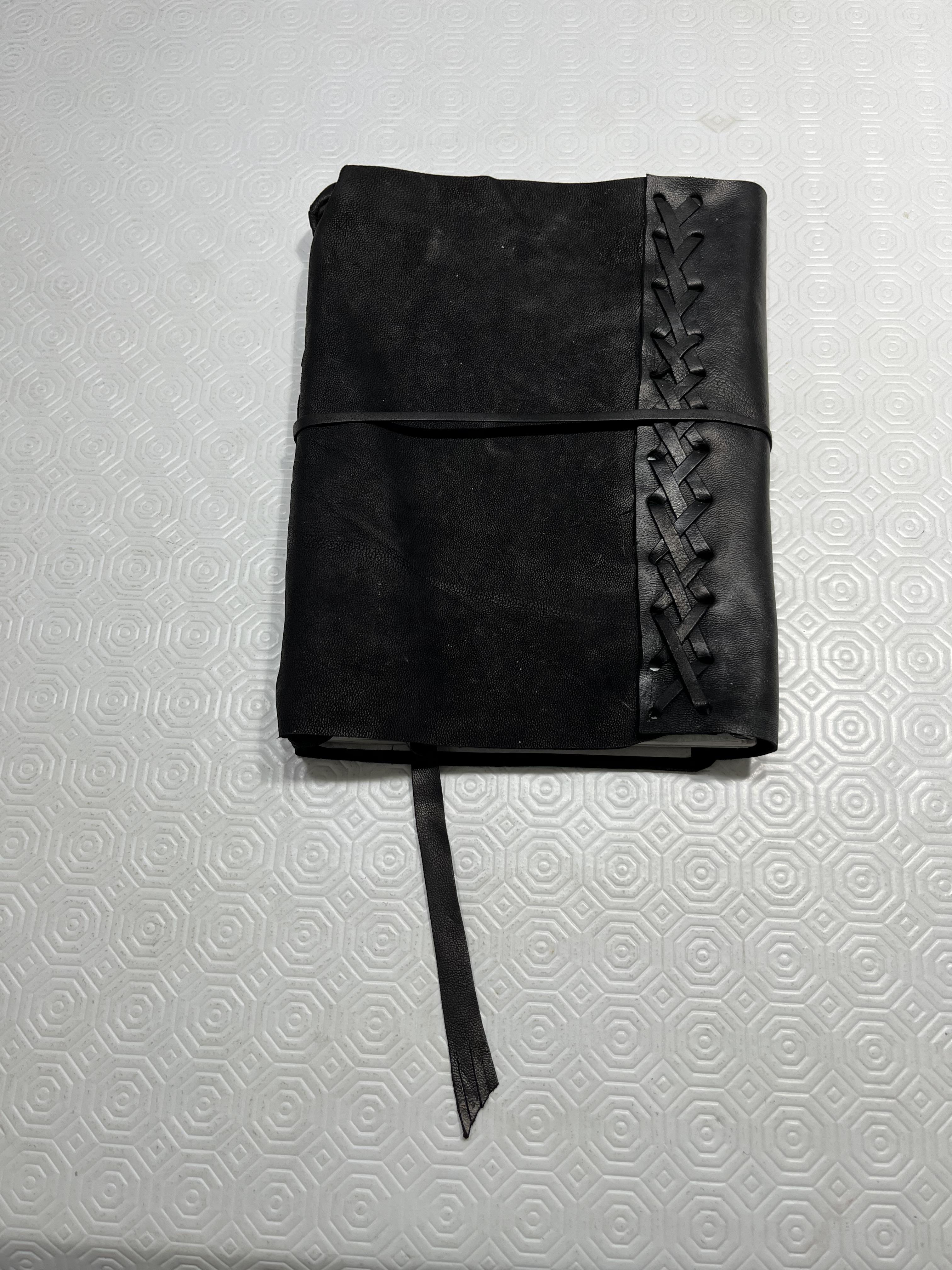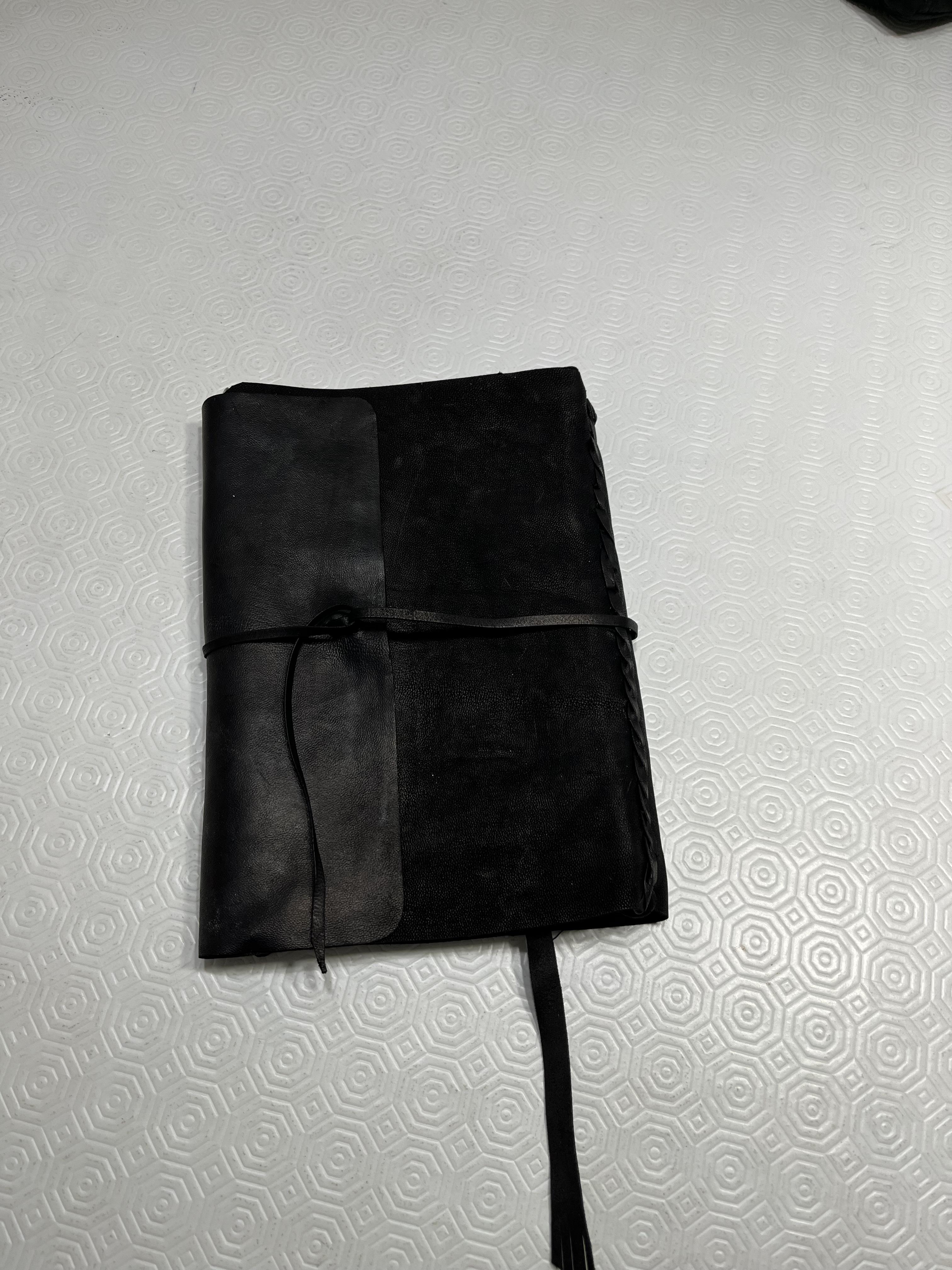
Nowandagain
Members-
Posts
41 -
Joined
-
Last visited
Contact Methods
-
Website URL
None
Profile Information
-
Gender
Male
-
Location
Israel
-
Interests
Carving/stamping, hand stitching, small projects. Unconventional dyes for veg tan.
LW Info
-
Leatherwork Specialty
Hobbyist
-
Interested in learning about
Dying veg tan with household materials; sources of leather and hardware that will ship here in small quantities at reasonable cost.
-
How did you find leatherworker.net?
Searching for information about home made dyes.
Recent Profile Visitors
3,854 profile views
Nowandagain's Achievements

Member (2/4)
-
Thanks. I use the Old City motif a lot, working free hand so that each one comes out a bit different depending on the size and shape of the piece. The mark on the extreme left, if you turn the tag so that the marks are vertical, are my initials in cursive Hebrew.
-
Here I am, doing leatherwork again after a long hiatus. I had a one man shop in a college town from 1972 to 1975, then decided I needed a steadier income. Now I'm retired, living in Israel, where leather and supplies are not easy to come by. I was self-taught and am learning some skills that I never mastered before. You.tube and forums like this one make that a lot easier than it was 50 years ago. Constraints challenge us to grow, and I have a few new ones here. I'm aiming at smaller projects now, like wallets and card cases, since I'm limited to whatever leather friends can bring me in small quantities when they visit from the U.S. Chemical dye for leather isn't available, even from Amazon (and my doctor doesn't want me near them), so I've been using vinegaroon (the recipe here is fantastic), coffee, shoe creme, olive oil and similar substances. If you hear of a new "kitchen table" recipe for dye, please pass it along. And I can't even think of trying to sell my work or I'd have to register to collect VAT. When I first started, I hated saddle stitching. I'd put my handbags together by lacing them with strips cut from the same leather as the bag itself, until I treated myself to a Consew 226. These days I'm saddle stitching nearly everything and have gotten a lot better at it. But I still miss my Consew.
-
Welcome from Israel. I had the same question as Deanr.
-
Natural veg tan treated with olive oil and waxed with paraffin from a tea light. Acrylic window. I need to clean up the end of the stitching
-
Nicely done. Particularly like the cutout for the sight.
-
I wish I had that option (and options to buy finishes and leather) but it’s one of the trade-offs for living here. Unfortunately there are few if any knives that Amazon will ship to Israel. On the plus side all of this encourages a person to get creative.
-
When we moved to Israel, I took some of my leather tools but not all of them. Unfortunately you can’t buy a skiving knife here (not that I loved the Osborne skiving knife I had in the U.S.) Big Stacks Small Workshop suggested using a razor blade scraper. Fine as it goes, but not much stability. And it doesn’t work well for straight 90 degree cuts. Viktor George had the answer. On one of his Tips videos, he shows some skiving knives he made from carbon steel putty knives that he bought second hand. I found some new high carbon steel knives at a hardware store that focuses on contractors. Now it was time to get to work! Using a set of cheap diamond-on-steel sharpening stones from Amazon, I sharpened one side only, starting with 400 grit, until I had a wire edge. Then onto 600 grit, then 1,000 and 1,200. After that, my trusty chef’s steel and the rough-side strop with green rouge. Total sharpening time: about 2 hours. The result was great! It skives, trims & makes vertical cuts. I’d post a picture but frankly it looks just like a putty knife with an edge on one side.
-
Or as they say in Hebrew, Taste & aroma aren’t debatable. But in Hebrew it rhymes.
-
It sure is. I checked out the hard copy once from the library-easily 3 inches thick! He’s got some beautiful button knots in there.
-
Ashley’s Book of Knots contains brief instructions on how to tie this. See plates 1705 and 1706 on page 294. (For some reason, I could not paste a link, but search Ashley’s Book of Knots PDF for a free online copy.) I first saw this knot back in the 1970s when a leather worker named Rob McCall (one of the most creative, inspired & inspiring leatherworkers I’ve met) used it to attach the buckle to his belts and simultaneously form a triple keeper. He also used it as an adjuster on his handbag straps. If you see a leather piece signed Sparrow, it’s one of his.
-
-
Working on becoming a middling leather worker again (more on that if I ever get around to writing my profile) but definitely a lousy photographer. I’ll see if my wife can take some shots of the cuff links.
-
I wish my basket weave came out 1/2 this well. Nicely done and nice even hand stitching. I stopped using a sponge for casing. Using a spray bottle seems to give me better results, even without bagging the leather or leaving it overnight.
-
A friend needed a cover for a monthly study guide he subscribes to. The guide doesn’t have even a soft cover- just 200+ pages of newsprint. He asked for a strap stitched at the top and bottom to hold the guide as an insert. I had some black 1-2 ounce nubuck that I thought would be perfect. Unfortunately the dye kept coming off on my hands! Not good, especially since he usually wears white shirts. Remind not to buy leather from India again. Bick 4 didn’t stop the bleeding, so I waxed the cover with paraffin. Success! For the closure extension & the lacing I skipped the Bick 4 and went straight to paraffin, which resulted in a higher gloss that contrasts nicely with the rest of the project. Instead of stitching, I used stair step lacing to fasten a reinforcement strip down the inside center and used one end of the lacing for the loop to hold the study guide in place. The other end became the bookmark. Then I used an 2 strand double-X lacing to add a cover extension to keep it from coming open in his briefcase. Your thoughts (other than ‘wow he’s a long winded cuss & a lousy photographer’)?




